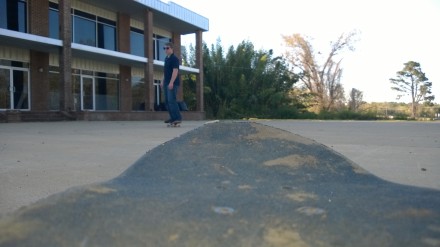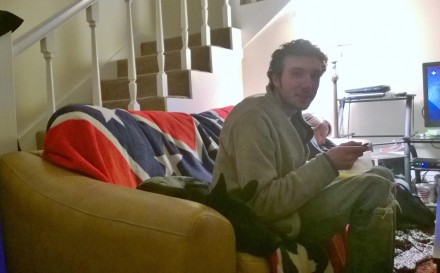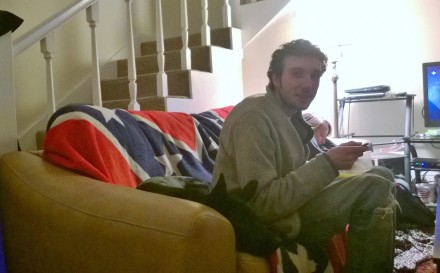On May 6, The Natural Products Laboratory at the University of Mississippi was given the green light to begin refining cannabis into a CBD-oil concentrate by the National Institute of Drug Abuse and the Drug Enforcement Agency.
This puts parents of children suffering from severe cases of epilepsy, as defined in Harper Grace’s law signed by Governor Phil Bryant on April, 17, one step closer to having another option in treating their children. With other options being medications with hefty side-effects or invasive brain-surgery.
CBD-oil is a less invasive treatment and holds fewer reported side-effects. It is a concentrate extracted from cannabis plants with low THC, the defining psychoactive compound of marijuana, levels and high cannabidiol, CBD, levels that have shown promise in treating those diagnosed with epilepsy. The other large difference between CBD-oil and typical current medical marijuana treatments is that the oil will be administered orally rather than smoked.
“I think it’s going to be a great opportunity for not only these universities, but for our state to shine” said Senator Josh Harkins. “We’ve had a lot of firsts at UMMC with the first heart transplant, Dr. Gay and her research with HIV, this could be real monumental.”
NPL has genetically manipulated their in-house plants to have exceptionally high CBD-levels. These high-CBD strains they have engineered will be ready to harvest between October and November. The CBD-oil is expected to be on NIDA’s inventory list by January 2015.
This doesn’t mean that patients will be seeing CBD medication as soon as the plants are ready to harvest, there are still a few more hurdles to clear before patients will be able to receive their cannabis-derived treatments.
Receiving a federal level of approval was the biggest one for Harper Grace’s law as this is where the majority of criticism was aimed by marijuana reform groups such as NORML and the Marijuana Policy Project(MPP), as well as the narrowness of who this bill would help.
MPP legislative analyst, Rachelle Yeung, said that she felt the meta-effect of CBD-only legislation would be overall positive for the medical marijuana movement.
This sentiment was shared in an official statement from the MPP that Harper Grace’s law was a strong endorsement by Mississippi lawmakers of the medicinal benefits of cannabis, and a step in the right direction.
“I didn’t want people getting cloudy, thinking, ‘Oh this marijuana, no I’m voting against it,’,” said Senator Harkins.
The low THC factor has been a line Mississippi lawmakers refuse to compromise on. Despite being a decriminalized state and being home to the only federal marijuana farm in the nation, medical marijuana is still a fiercely opposed movement by many of our states senators and representatives.
Gov. Bryant has stated that he only considered CBD-exclusive treatment after being assured that there was no way for the patient to get high. This was mirrored by Senator Harkins who, when originally approached the godmother of Harper Grace to legalize CBD-oil, was hesitant to do anything beyond looking into the situation.
He credits the first ten minutes of Sanjay Gupta’s CNN-documentary, “Weed”, for his change of mind and heart regarding his stance on cannabis derived treatment. He also added that if studies once more studies are done on the medicinal value of THC, he would be open to looking into the matter.
Deputy director of NORML, Paul Armentano, gave a statement via email saying that, “these measures do not represent any significant-change law, only the illusion of change. While the passage of these measures may pose symbolic victories for legislators, they fail to provide tangible benefits to constituents that they are intended to serve.”
Senator Harkins responded with the reasoning that in order to get the bill signed, he needed to make sure there were controls in place that would ease Governor Phil Bryant’s worries that this could be abused in some manner.
Those controls being that only Ole Miss will be able to cultivate and extract the CBD from cannabis plants, and only the University of Mississippi Medical Center(UMMC) will be able to distribute it.
Dr. Mahmoud ELSohly, Director of the CBD-oil project, could not be reached directly for a comment as he was out sick.
NPL’s communication specialist, Erin Garrett
“If we’re going to be providing this, we want to make sure we’re not saying you can have some CBD-oil, but it comes from Bubba’s CBD Shop on some backwoods country road,” said Senator Harkins. “We’re doing this in a responsible way that people can feel comfortable with what they’re taking is low THC and high CBD.”
The amount of protection patients would receive from being prosecuted for possessing the CBD-oil was a large point of concern from the MPP who released an action alert stating that Harper Grace’s law would not provide an affirmative defense for patients. Senator Harkins was quick to correct the misinterpretation.
“The bill provides an exemption [for CBD-extracts] from the schedule I class of narcotics,” Senator Harkins clarified. He added, “People didn’t read the bill that are making assumptions.”
The next hurdle patients will have to clear is that the UMMC, who will be distributing the CBD-oil, will need approval from the Federal Drug Administration. The UMMC could not be reached for comment on the progress of the approval process thus far.











